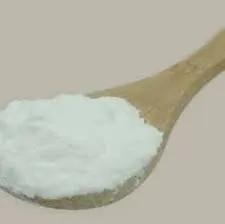Understanding Highly Potent Active Pharmaceutical Ingredients A Comprehensive Overview
In the pharmaceutical industry, the term Highly Potent Active Pharmaceutical Ingredients (HPAPIs) has become increasingly prominent due to the growing demand for advanced therapeutics, particularly in oncology and other therapeutic areas that require precise targeting of biological mechanisms. HPAPIs are defined as pharmaceutical ingredients that possess high toxicity and potency, often requiring specialized handling methods to ensure safety for both patients and healthcare providers.
Importance of HPAPIs in Modern Medicine
The development of HPAPIs has transformed several therapeutic areas, particularly those focusing on cancer treatment, autoimmune diseases, and other conditions where standard treatments may not be effective. These potent compounds are typically designed to target specific molecular pathways or receptors, allowing for more effective treatment with potentially fewer side effects compared to conventional drugs. This precision medicine approach enhances the therapeutic index, maximizing efficacy while minimizing adverse reactions.
HPAPIs can include various classes of compounds, including small molecules, peptides, and biologics. Their high potency means that only a minimal quantity is required to achieve the desired therapeutic effect, which can significantly reduce the overall drug dosage required and subsequently lessen patient exposure to less effective compounds. This characteristic is particularly beneficial in managing chronic conditions where long-term therapy is necessary.
Challenges in the Development and Manufacturing of HPAPIs
Despite their potential, the development and manufacturing of HPAPIs come with a unique set of challenges. The high toxicity associated with these compounds necessitates stringent safety measures during the handling, production, and formulation stages. Manufacturers must implement rigorous containment strategies, such as closed systems and high-containment facilities, to protect workers and ensure environmental safety.
Regulatory scrutiny is also heightened for HPAPIs due to their potent nature. Regulatory agencies require comprehensive data to assess the safety, efficacy, and environmental impact of these ingredients. This often leads to longer development timelines and increased costs for pharmaceutical companies.
Best Practices for Handling HPAPIs
highly potent active pharmaceutical ingredients

To mitigate the risks associated with HPAPIs, several best practices are recommended throughout their lifecycle—from research and development to manufacturing and administration.
1. Risk Assessment and Management Conducting thorough risk assessments prior to handling HPAPIs helps identify potential exposure scenarios and implement necessary controls.
2. Advanced Containment Solutions Utilizing closed processing systems and isolators can minimize the risk of exposure for workers. These systems are designed to ensure that HPAPIs are handled within a controlled environment, reducing the potential for contamination and personal exposure.
3. Training and Awareness It is crucial to train all personnel involved in the handling of HPAPIs. Employees should understand the importance of safety protocols and be well-equipped to manage any incidents involving exposure or spills.
4. Regular Monitoring and Compliance Continuous monitoring for air and surface contamination, along with strict adherence to regulatory requirements, is vital in maintaining a safe working environment.
5. Waste Management Protocols Given the hazardous nature of HPAPIs, proper disposal techniques must be in place to handle waste material. This might involve incineration or other approved methods to ensure environmental safety.
Future Directions for HPAPIs
The future of HPAPIs looks promising, with ongoing research focusing on novel compounds that offer targeted solutions to complex diseases. Continuous advancements in drug delivery systems, such as nanoparticle-based delivery, aim to improve the efficacy and safety of HPAPIs while simplifying the therapeutic regimen for patients.
In conclusion, Highly Potent Active Pharmaceutical Ingredients play a vital role in the advancement of modern therapeutics, offering hope for improved patient outcomes. However, their handling and manufacturing present significant challenges that require careful consideration and robust safety measures to protect both healthcare workers and the environment. As the pharmaceutical landscape continues to evolve and innovate, the importance of HPAPIs will only enhance, emphasizing the need for ongoing research, stringent regulation, and adherence to best practices in their development and application.

